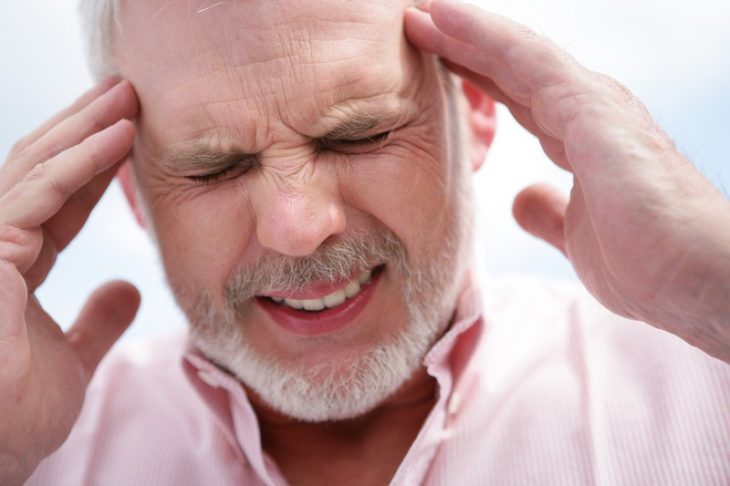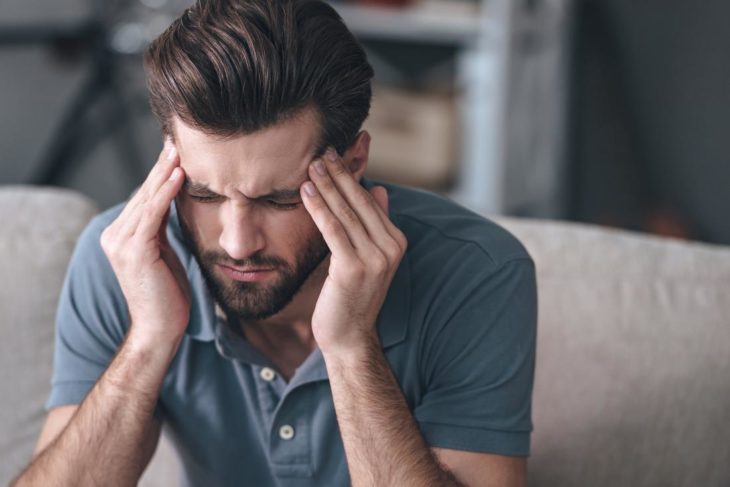Last year, I was on vacation in Berlin when I woke up at 4 a.m., unable to move. Searing pain began at the crown of my head and extended well below my shoulders, causing my head, face, and neck to clench up and spasm whether I tried to move or lie perfectly still. The most extreme combination of tension and aching I’d ever experienced, I managed to nudge my partner awake and whispered, “Drugs. Find a doctor.” We had to be on a plane in seven hours, and I was in the midst of a horrific migraine.
I’ve had migraine headaches since I was 8 years old, but few compare with the horror of the German incident. Generally speaking, I feel my migraines coming on; while I don’t experience a visual aura as a warning sign the way some people do, by now I can recognize the symptoms almost before the pain begins. My specific migraines are a combination of pounding pain in my temples, nausea, and an inability to tolerate light, even if I can still technically see. Depending on the strength of an attack, I have anywhere from 30 minutes to an hour to get to a dark, cool, quiet space where I can rest and wait out the pain. I carry both prescription medication and a cocktail of over-the-counter drugs in my bag at all times and usually have a tube of that goofy HeadOn gel on hand as well.
Migraines are generally misunderstood because from time to time, most people get a run-of-the-mill headache. But what one person experiences as an inconvenience cured by ibuprofen is another person’s living hell, an exacerbated state of pain that may be genetically influenced (like mine), the result of a neurological issue, or brought on by stress (also mine). The invisibility of the condition doesn’t help either; people can easily shrug off the pain of others when it isn’t immediately apparent. Women are three times as likely as men to suffer from migraines, in part due to the relationship between hormone levels and headaches. When I learned this, it made complete sense: I almost always have migraines right before my period.
As long as my migraines have been misunderstood, I’ve also misunderstood the magnitude of my problem. Feeling guilty for my sudden attacks even at a very young age, I would attempt to quash sickness with pills and a cold cloth, enough to still go to school or work. In forcing myself into wellness that was a lie, I’ve ended up puking in rental cars, on the side of the road, and even leaning out of stopped taxis, whose drivers were patient enough to wait for me and hand me a tissue; in someone’s front yard, in my own front yard, in public garbage cans, in an amusement park, in an alley in Dublin on a vacation. The collective humiliation of these events only reinforced that it was my fault. I was sick, and then I made it worse.

Source: Pinterest
By the time I got to college, telling people I had a headache just wasn’t cutting it anymore. Missing class for days on end wasn’t exactly working out, and after a three-day migraine, I ended up at the student health center, desperate for relief. The doctor on duty that day, a fellow migraine sufferer, looked at my half-closed eyes and immediately asked, “Do you ever curl into strange positions for relief?” Without hesitation, I replied that I did, and he smiled ruefully. “Only people with migraines understand what I just said. Have you ever been diagnosed?”
Of course, I hadn’t. He wrote me my first prescription for Sumatriptan, and in the year that followed, I paid several visits to the university hospital’s headache clinic, where a nervous young resident performed every neurological test in the book. After thoroughly checking my vision and hearing, I was given a clean bill of health and told what many migraine sufferers hear: live as consistently as possible. Altering your schedule, skipping meals, and drinking alcohol or caffeine must be avoided. I already knew all of that. I’d been trying to ward off the monstrous attacks since I was a child. I knew nearly every trick by then and avoided MSG, red wine, and long-term exposure to fluorescent lights—three of my most potent triggers—as if my life depended on it.
Over the next few years, my pain didn’t improve much, though I at least had strong medication to rely on as I pushed through grad school. I quit a waitressing job after being hassled by my boss for repeatedly needing to go home early with intense migraines—no doubt brought on by the stress of the work environment—and I once ended up in the emergency room because I’d been unable to shake a forehead neuralgia after two days of skull-splitting pain. Around the same time, a friend suffering with another type of chronic pain suggested I try acupuncture. It has drastically improved her quality of life, and her pain was nearly gone. “Maybe you could find some relief and be less stressed about apologizing to people all of the time,” she encouraged.

Source: CBC.ca
Though admittedly a bit freaked about needles voluntarily being jammed into my body, I was also pretty desperate. I also had no idea just how healing acupuncture would be. Working with an attentive, sensitive acupuncturist and herbalist, I began a course of treatment, combining herbal remedies and twice-weekly acupuncture that took only several months to have a profound effect. As my healer Jaimie often told me, “There is life after migraines.” No one had ever said something so obvious yet so empowering to me before. Within six months, I no longer needed to visit her regularly. Within a year, I had a needle treatment once a month, right before my period, to keep most of my symptoms at bay; I was otherwise mostly migraine-free.
Among migraine sufferers, I consider myself pretty lucky. Though acupuncture has not completely done away with my pain, it has drastically reduced the frequency and intensity of my attacks. I’ve taken control of my own health and am better prepared when an attack does strike, armed with a mix of effective medication and holistic treatment options. I’m also incredibly lucky to be married to someone who treats my condition not only as a legitimate, serious illness but demonstrates patience and kindness at the first sign of an attack. He often rubs my feet, pressure points and all, moving the blood from my pounding head downward, and has been known to keep it up long after I’ve passed out.

Source: Medical News Today
I still worry a lot when I travel because time zone shifts tend to make me woozy, and I experience pretty extreme jet lag, especially when flying east. Having been a freelance writer for the past two years, I don’t worry much about hostile supervisors who misunderstand my condition, but I am concerned that it will become an issue in the future if I ever take another desk job. Mostly, I focus on telling people that while I haven’t beaten the migraine demons, I’ve fought them off with a lot of success. I trust myself more than I ever have when it comes to my own health and well-being, and I really do believe in life after migraines. I’ve also learned that you can’t be embarrassed about something you can’t control. Shame is guilt handed to you by other people. You don’t have to accept it.
Original by Brittany Shoot
